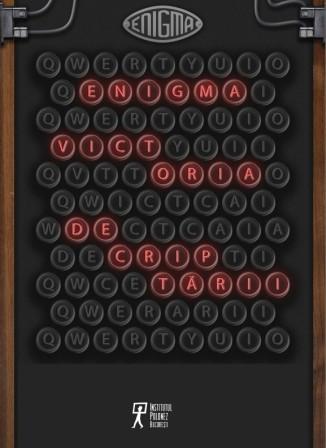 Thanks to the efforts of brilliant Polish mathematicians, the complex cipher of the Enigma, the German cipher machine, was broken. This influenced the course of World War II. More than seventy years after its completion, the Polish Institute and the Wielkopolska Voivodeship Council invite you from 14 to 30 June 2021 to the National Museum of History of Moldova to visit the exhibition entitled "Enigma. The victory of decrypting".
Thanks to the efforts of brilliant Polish mathematicians, the complex cipher of the Enigma, the German cipher machine, was broken. This influenced the course of World War II. More than seventy years after its completion, the Polish Institute and the Wielkopolska Voivodeship Council invite you from 14 to 30 June 2021 to the National Museum of History of Moldova to visit the exhibition entitled "Enigma. The victory of decrypting".
The German Enigma cipher machine was made by Arthur Scherbius. He achieved commercial success in the civilian market, as well as in state and administrative institutions long before the outbreak of World War II (1939-1945). As early as 1932, Polish cryptologists managed to decipher the extremely complex Enigma codes for the first time. This took place at the Saxon Palace in Warsaw, which housed the headquarters of the Cipher Bureau of the 2nd Division of the Polish Army General Staff.
The parents of the success were the Polish mathematicians-cryptologists: Marian Rejewski, Jerzy Różycki and Henryk Zygalski. Their achievements have allowed the decoding of the Enigma ciphers, which were constantly being improved.
Five weeks before the outbreak of World War II, on July 25, 1939, the heads of the Polish Cipher Bureau and the mathematicians-cryptologists revealed the Polish achievements to the French and British secret services. After the outbreak of the war, decryption continued in Great Britain and France, with the participation of Polish scientists. This part of the story is known, however, from movies and books.
The exhibition, prepared by the Wielkopolska Voivodeship Council and, in the Romanian version, by the Polish Institute in Bucharest, acquaints us with the history of lesser-known Polish heroes-cryptologists, their teachers and collaborators, whose knowledge and mathematical genius allowed them to reveal one of the best kept secrets of the Third Reich.
Observing the development of the contemporary knowledge-based economy, we often forget that, in many areas, its roots spring from the trenches of the great wars of the 20th century.
The exhibition can be seen on the fence of the National Museum of History of Moldova (31 August 1989 Street, no. 121A) from 14 to 30 June 2021.
The fascinating history of this achievement can be read in the article about the Enigma in the monthly magazine "Historia" (text in Romanian).


















































